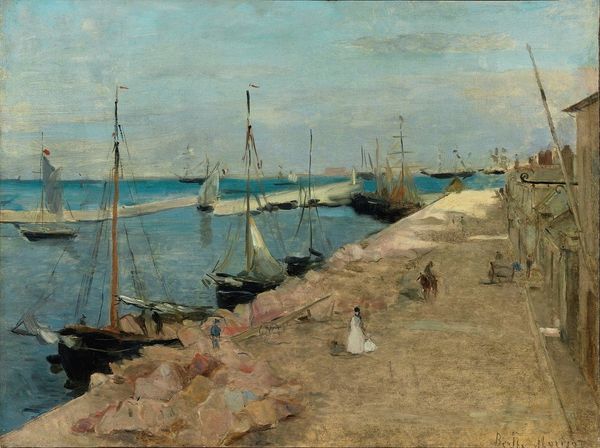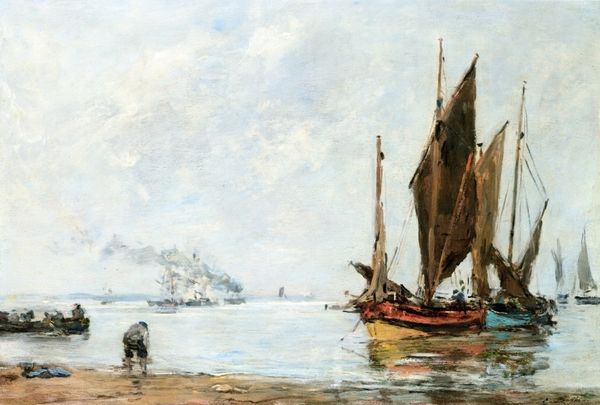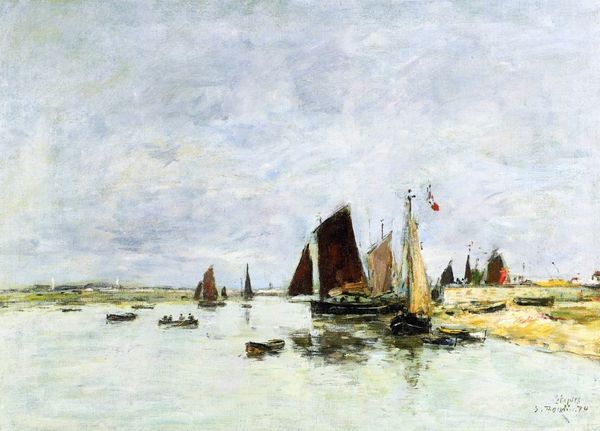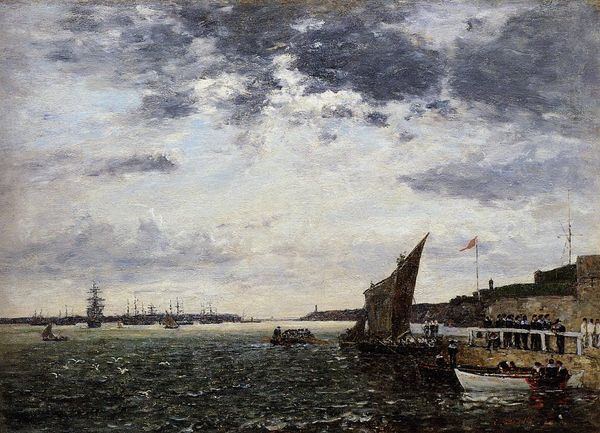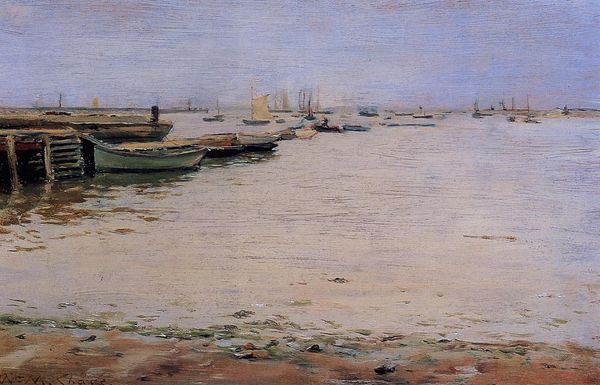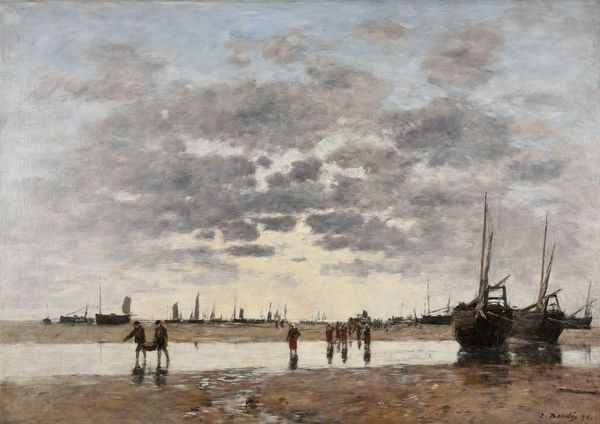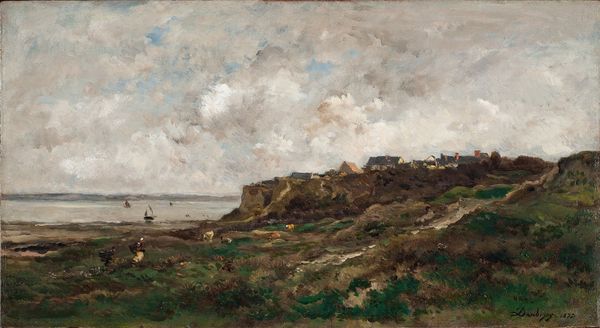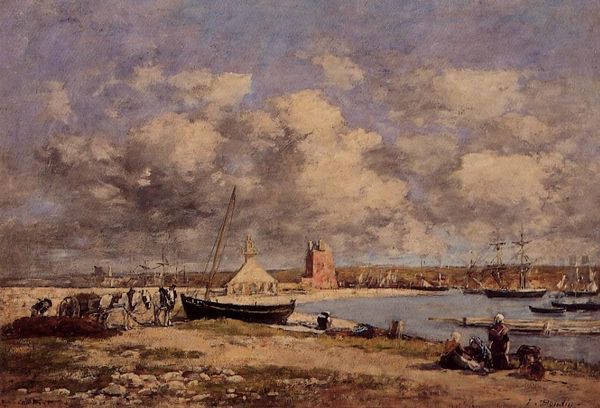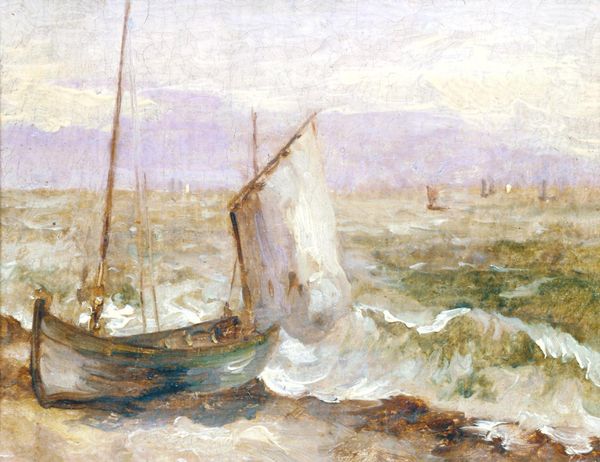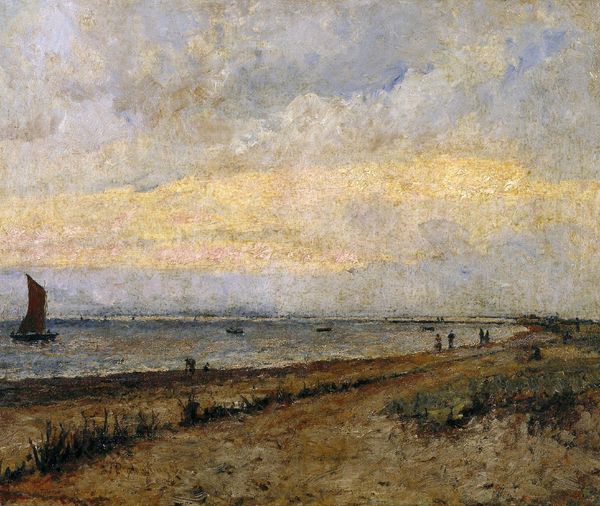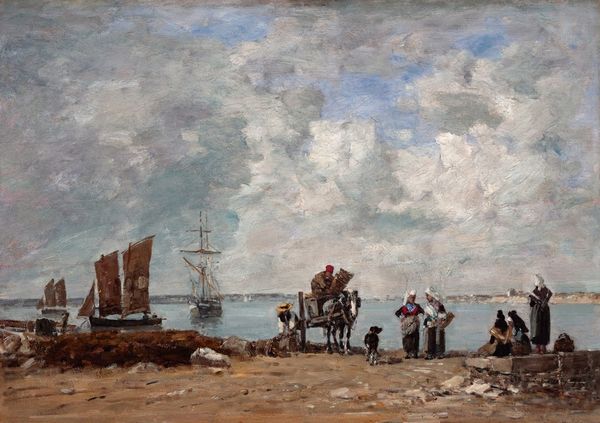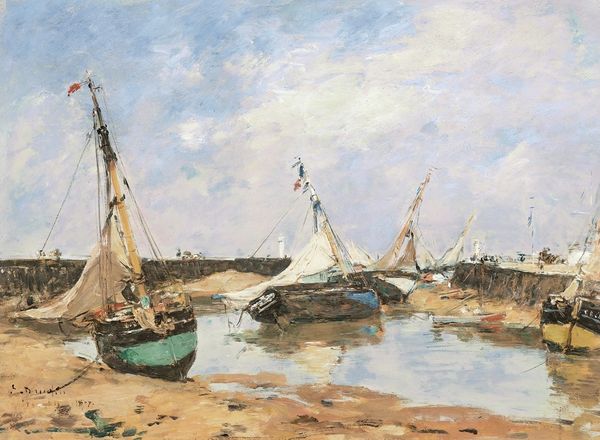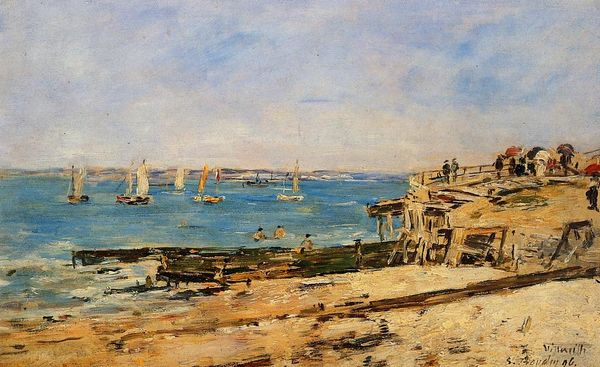
Copyright: Public domain
Editor: Here we have Eugène Boudin’s "Shore at Sainte-Adresse, Low Tide," painted in 1894 using oil on what appears to be a small canvas. It strikes me as a really intimate portrayal of a coastal scene; the light is so soft. What do you notice first about this painting? Curator: Immediately, I'm drawn to the orchestration of the color palette. Boudin deftly balances the cool blues of the sea and sky with the warmer earth tones of the beach, achieving a harmonic consonance. Note also how the impasto brushstrokes capture the ephemeral quality of light, rendering form with a dynamic, textural surface. What compositional structures underpin this surface? Editor: Well, I see how the boats sort of guide your eye into the distance, towards the horizon line. Curator: Precisely. Boudin employs linear perspective to establish depth, but equally important is the interplay between the horizontal axis of the shoreline and the verticality introduced by the boats and figures. Does the asymmetrical balance bother you? Editor: Not really. It almost feels more natural, reflecting the real world's imperfections. It feels less staged than a symmetrical painting would. Curator: Indeed. Boudin’s artistic project involved an interest in capturing everyday scenes. The materiality of paint becomes significant. The visible brushstrokes remind us we're looking at a constructed image, a representation rather than a direct imitation. I think we can also observe some level of preparatory drawing on the canvas. Editor: It’s fascinating to consider the layers of meaning in what appears to be a simple landscape. Curator: Absolutely. Through careful consideration of form and technique, Boudin transcends mere representation, inviting viewers to contemplate the very nature of seeing. I find myself rethinking Impressionism thanks to his work.
Comments
No comments
Be the first to comment and join the conversation on the ultimate creative platform.
